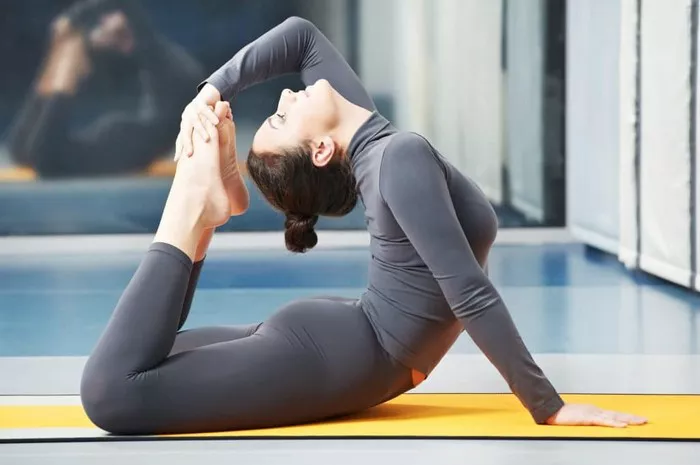Hot yoga has surged in popularity over the past few decades, drawing enthusiasts with promises of enhanced flexibility, strength, and overall fitness. This practice, which involves performing yoga in a heated environment, typically around 90 to 105 degrees Fahrenheit, claims various health benefits. But the critical question remains: does hot yoga get you in shape? This article delves into the science and practical aspects of hot yoga to determine its effectiveness as a fitness regimen.
The Basics of Hot Yoga
Hot yoga is an umbrella term for yoga practices conducted in a heated room. The most well-known form is Bikram yoga, which follows a specific sequence of 26 postures and two breathing exercises, performed over 90 minutes. Other styles include hot vinyasa and hot power yoga, which may have varying sequences and durations but share the heated environment.
The heat in hot yoga is intended to mimic the climate of India, the birthplace of traditional yoga. Practitioners believe the heat increases the benefits of yoga by improving circulation, enhancing flexibility, and promoting detoxification through sweat.
Evaluating Physical Fitness
To assess whether hot yoga gets you in shape, it’s essential to define what “in shape” means. Physical fitness encompasses several components:
- Cardiovascular Endurance: The ability of the heart and lungs to supply oxygen to the body during sustained physical activity.
- Muscular Strength: The amount of force a muscle can produce in a single effort.
- Muscular Endurance: The ability of muscles to perform repeated contractions over time without fatigue.
- Flexibility: The range of motion available at a joint.
- Body Composition: The proportion of fat and non-fat mass in the body.
A well-rounded fitness program aims to improve all these components. Therefore, the effectiveness of hot yoga should be evaluated based on its impact on each of these areas.
Cardiovascular Endurance and Hot Yoga
Cardiovascular endurance is a key indicator of overall fitness. Traditional forms of exercise, such as running or cycling, are known to enhance cardiovascular health. But how does hot yoga measure up?
Heart Rate Response
Studies have shown that hot yoga can elevate heart rates to levels similar to those achieved through moderate-intensity aerobic exercise. For instance, a study published in the Journal of Strength and Conditioning Research found that participants’ heart rates during a Bikram yoga session averaged 80% of their maximum heart rate, comparable to brisk walking or light jogging.
VO2 Max
VO2 max, or maximal oxygen uptake, is another critical measure of cardiovascular fitness. Research indicates that while hot yoga can improve cardiovascular fitness, it may not be as effective as more traditional aerobic exercises. A study in the Journal of Alternative and Complementary Medicine found that participants who practiced hot yoga three times a week for eight weeks saw improvements in their VO2 max, but the gains were modest compared to those seen in high-intensity interval training (HIIT).
In summary, hot yoga can contribute to cardiovascular endurance, particularly for those new to exercise or seeking a lower-impact alternative. However, for significant improvements in VO2 max and overall cardiovascular health, it should be complemented with other forms of aerobic exercise.
Muscular Strength and Hot Yoga
Building muscular strength typically involves resistance training exercises that challenge the muscles to exert force. Weightlifting, bodyweight exercises, and resistance bands are common methods. Can hot yoga provide similar benefits?
Muscle Engagement
Hot yoga sequences often include poses that require significant muscle engagement and holding. For example, the Warrior series, Plank poses, and Chair pose demand strength in the legs, core, and upper body. Holding these poses in a heated environment can further intensify the muscular demand due to increased heart rate and fatigue from sweating.
Strength Gains
However, while hot yoga can enhance muscle tone and endurance, it may not lead to substantial gains in muscle strength. The absence of progressive overload—a key principle in strength training—limits the potential for significant muscle growth. Progressive overload involves gradually increasing the weight, resistance, or intensity of exercises to continuously challenge the muscles. In hot yoga, the resistance provided is primarily body weight, and the lack of variation in some yoga sequences can plateau strength gains.
Therefore, while hot yoga can help maintain muscle strength and improve endurance, it should ideally be part of a broader fitness regimen that includes targeted resistance training for optimal strength development.
Muscular Endurance and Hot Yoga
Muscular endurance refers to the ability of a muscle group to sustain repeated contractions over time. Hot yoga, with its emphasis on holding poses and transitioning smoothly between them, can significantly enhance muscular endurance.
Pose Duration and Repetition
Hot yoga classes typically involve holding poses for extended periods, sometimes up to a minute or longer. This sustained effort, especially in a heated environment, trains muscles to resist fatigue. Additionally, the repetitive nature of certain yoga sequences, such as Sun Salutations, helps build endurance in various muscle groups, including the legs, arms, and core.
Practical Benefits
Improved muscular endurance from hot yoga can translate to better performance in daily activities and other forms of exercise. For example, enhanced core endurance can improve posture and reduce the risk of back pain, while stronger leg muscles can aid in activities like running or cycling.
In conclusion, hot yoga is effective in building muscular endurance, making it a valuable component of a well-rounded fitness program.
Flexibility and Hot Yoga
Flexibility is one of the most touted benefits of yoga, and the heated environment of hot yoga can amplify this effect. The heat allows muscles to stretch more easily, potentially leading to greater improvements in flexibility.
Temperature and Flexibility
Heat increases blood flow to the muscles, which can enhance their elasticity. This means that poses requiring deep stretches, such as forward bends or backbends, may be more accessible and comfortable in a hot yoga class. A study published in the Journal of Bodywork and Movement Therapies found that participants in hot yoga experienced significant improvements in flexibility, particularly in the hamstrings and lower back.
Risk of Overstretching
However, the increased flexibility achieved in hot yoga comes with a caution. The heat can sometimes lead to overstretching, where muscles are pushed beyond their safe limits, increasing the risk of injury. Practitioners must be mindful of their body’s signals and avoid pushing too hard, even when the heat makes deeper stretches feel more achievable.
In essence, hot yoga can significantly enhance flexibility, but it should be practiced with an awareness of the body’s limits to prevent injury.
Body Composition and Hot Yoga
Body composition refers to the proportion of fat and non-fat mass in the body. A healthy body composition typically involves a higher proportion of muscle and a lower proportion of fat. Does hot yoga contribute to a favorable body composition?
Calorie Burn
Hot yoga sessions can be quite demanding, leading to a substantial calorie burn. The exact number of calories burned depends on factors such as the intensity of the practice, the individual’s weight, and the duration of the session. According to the American Council on Exercise, a 90-minute Bikram yoga session can burn approximately 330 to 460 calories. This calorie expenditure is comparable to other moderate-intensity activities like brisk walking or light cycling.
Fat Loss and Muscle Tone
Consistent practice of hot yoga can contribute to fat loss, especially when combined with a balanced diet and other forms of exercise. Additionally, the muscle engagement in various poses can help tone the body, contributing to a leaner appearance.
However, for significant changes in body composition, hot yoga alone may not be sufficient. Incorporating strength training and higher-intensity cardiovascular exercises can enhance fat loss and muscle building more effectively.
See Also: How Does Hot Yoga Help You Lose Weight?
Practical Considerations for Hot Yoga
While hot yoga offers various fitness benefits, several practical considerations should be taken into account to maximize its effectiveness and safety.
Hydration and Electrolytes
The high temperatures and intense sweating in hot yoga necessitate careful attention to hydration. Practitioners should drink plenty of water before, during, and after the session to prevent dehydration. Additionally, replenishing electrolytes lost through sweat is crucial to maintain proper muscle function and avoid cramps or fatigue.
Clothing and Equipment
Light, breathable clothing is recommended for hot yoga to facilitate sweating and prevent overheating. A good-quality yoga mat that provides grip even when wet is also essential to prevent slipping during poses. Some practitioners also use towels to manage sweat and enhance grip on the mat.
Health Conditions and Precautions
Individuals with certain health conditions, such as cardiovascular issues, respiratory problems, or heat intolerance, should consult with a healthcare professional before starting hot yoga. The intense heat and physical exertion can exacerbate these conditions, posing a risk to health.
Progression and Variation
To avoid plateaus in fitness progress, varying the yoga routine and incorporating other forms of exercise is beneficial. While the structure of Bikram yoga is fixed, other hot yoga styles like vinyasa or power yoga offer more flexibility in sequencing, allowing for greater variation and progression.
Conclusion
So, does hot yoga get you in shape? The answer is nuanced. Hot yoga can certainly contribute to improved physical fitness by enhancing cardiovascular endurance, muscular endurance, and flexibility. It can also aid in calorie burning and contribute to a healthier body composition when combined with other fitness practices and a balanced diet. However, for significant improvements in muscle strength and overall cardiovascular health, hot yoga should be part of a broader fitness regimen that includes resistance training and higher-intensity aerobic exercises.
Practiced mindfully and complemented with other forms of exercise, hot yoga can be an effective and enjoyable way to enhance overall fitness and well-being. As with any fitness program, individual results will vary based on consistency, effort, and personal health considerations.


















